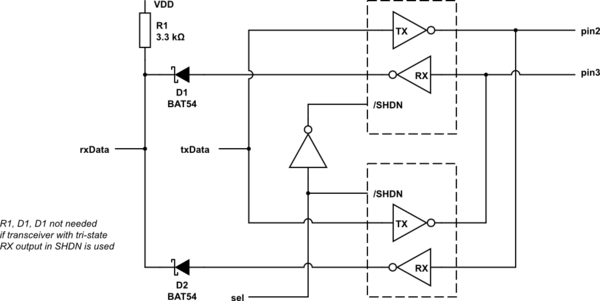Other Parts Discussed in Thread: TMUX4827, MAX3221
Tool/software:
Hello,
I have been researching how to swap RS232 RX and TX connections and found the image below. It would work but should the user need to change the connections they would have to remove and re-solder the resistors. During my research I saw someone recommend the ADG5434. While it seems the ADG5434 would work, it requires a 9V supply and I only have 5V available. This constraint lead me to the TMUX734. I have attached a schematic if someone would be willing to review it.
The two questions I have are:
- Is the TMUX7234 suitable for switching true RS232 voltages?
- Can the TMUX7234 operate as required, to switch RS232 voltages, with only a +5V supply as shown in the schematic?
Thank you for your time.




